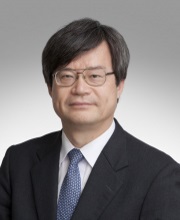How to Realize 80% Reduction in Greenhouse Gas Emission by 2050
Abstract
The Japanese government targeted an 80% reduction in greenhouse gas (GHG) emission by 2050.
According to Professor Yoichi Kaya, the total GHG emission F can be explained by the following formula.
![]()
P is the population. G is the GDP. E is the energy consumption. By 2050, the total population P in Japan will decrease to 74%, but G/P will increase to 150%. If we can reduce E/G to 60% and F/E to 30%, the total GHG emission can be reduced to 20%. I believe that new materials and devices will realize a 40% reduction in E/G by 2050. Therefore, the priority issue is how to realize a 70% reduction with F/E. For a 70% reduction, an increase in the ratio of renewable energy sources (RESs) being used would be inevitable. To increase the ratio of RESs, their combination with energy servers such as batteries is necessary. Therefore, we performed trial calculations to determine how much money is necessary to realize an 80% reduction in GHG emission. Assuming that the reduction in the costs of RESs and energy servers will continue, we need 10.4 trillion Japanese yen in total, which corresponds to 127 billion Singapore dollars. Of course this is a huge amount of money, but if we continue research and development up to 2030 and begin the installation of RESs and energy server systems from 2030 to 2050, the cost of payment per year is 0.1% of the total GDP in Japan. Intelligent power control units will play significant roles in such new electric power systems. This is the reason why we are interested in wide bandgap materials, especially GaN and related semiconductors. In this presentation, I would like to show the recent development of GaN power devices.

